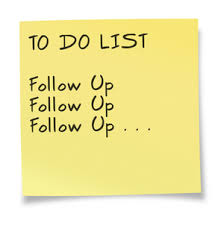 OK . . . I have a confession to make. When I’m on the road and run down, sometimes I flop into bed and watch an episode or two of South Park on Comedy Central. While the show’s satire is often over the top, their social commentary on all sorts of current events is razor sharp. A few nights ago I found myself caught up in this “travel habit” and engaged in watching season 19 episode five, which was all about Internet Shaming and included a subplot about Charity Shaming.
OK . . . I have a confession to make. When I’m on the road and run down, sometimes I flop into bed and watch an episode or two of South Park on Comedy Central. While the show’s satire is often over the top, their social commentary on all sorts of current events is razor sharp. A few nights ago I found myself caught up in this “travel habit” and engaged in watching season 19 episode five, which was all about Internet Shaming and included a subplot about Charity Shaming.
If you don’t know what charity shaming is, this short YouTube video snippet from the South Park episode captures it perfectly.
https://www.youtube.com/watch?v=aKsOwJ8AGWo
Of course, the example South Park uses focuses on a point of purchase transaction that you could assume is likely part of a larger cause related marketing effort. However, this episode kicked me in the brain, and I think there are many other examples of charity shaming that go beyond the cash register.
For example, what about the Salvation Army’s red kettle campaign. I’m greeted by a volunteer who is ringing a bell and wishing me a Merry Christmas and asking for a donation. I need to decide whether or not to publicly walk by the kettle and not support the charity.
If I am right about the Salvation Army aforementioned example, then surely Cub Scouts and Girl Scouts selling stuff outside of grocery stores gets added to the charity shaming category. And my old favorite activity (read this as sarcasm) of selling duck race adoptions to unsuspecting customers exiting the grocery story is another example. Right?
I recently attended a few different charity gala ball charity / auction events in my community. During those events’ live auctions, there was something called “fund-a-need” where attendees are asked to put their bid paddle in the air and make a contribution to support a specific project at a certain funding level. If you want to learn more about this fundraising strategy, our friends at Fundraiser Help blog do a nice job explaining it.
In previous years, I’ve enjoyed putting my bid paddle in the air to support fun projects and programs. One year I think I bid on underwriting the cost of a mattress (or maybe it was a blanket) for our local homeless shelter. Another year, it was underwriting kitchen renovations and a food program at our local Boys & Girls Club.
However, recently the fund-a-need strategy has evolved away from projects / programs and towards a more simple request of “we need your money to underwrite everything we do for our clients“.
There was something I didn’t like about the new fund-a-need strategy, but I couldn’t put my finger on it. At first, I thought maybe I just missed the emotional case for support messaging that came with a specific project or program. However, now I’m beginning to wonder if my objection is bigger than that.
Could it be that asking people to put their bid paddle up in the air in front of their peers and friends to simply give an unrestricted contribution to your organization is nothing more than “Charity Shaming“?
I’ll leave it there today and let you chew on this question. If you have thoughts or opinions, then please use the comment box below to share them. I would love to hear what you have to say because I am honestly struggling with what bothers me about fund-a-need auction strategies that lack project and program components.
You might also want to check out the following:
- Hulu: South Park episode on internet and charity shaming
- Search the Twitter hashtag #charityshaming
- Esquire.com: South Park Shamed the Internet Over Internet Shaming
Here’s to your health!
Erik Anderson
Founder & President, The Healthy Non-Profit LLC
www.thehealthynonprofit.com
erik@thehealthynonprofit.com
http://twitter.com/#!/eanderson847
http://www.facebook.com/eanderson847
http://www.linkedin.com/in/erikanderson847

 A few days ago I found myself talking with an old friend who is an executive director for a youth development non-profit organization in Indiana. We were chatting about her organization’s year-end stewardship strategies, which include something called a “Cookie Drop.”
A few days ago I found myself talking with an old friend who is an executive director for a youth development non-profit organization in Indiana. We were chatting about her organization’s year-end stewardship strategies, which include something called a “Cookie Drop.”
 If you’re seeking to expand your volunteer base, you may not need to look very far.
If you’re seeking to expand your volunteer base, you may not need to look very far.![IMG_20151124_165228090[1]](https://donordreams.files.wordpress.com/2015/11/img_20151124_1652280901.jpg?w=169) First, let me start by wishing you and your non-profit organizations a very Happy Thanksgiving! My plane landed at a crazy, busy O’Hare airport yesterday and now I have the luxury of three straight days at home with family and friends (and let’s not forget the turkey and trimmings . . . Mmmmmm!) Since it is Thanksgiving Day, I was going to simply re-post an old blog such as:
First, let me start by wishing you and your non-profit organizations a very Happy Thanksgiving! My plane landed at a crazy, busy O’Hare airport yesterday and now I have the luxury of three straight days at home with family and friends (and let’s not forget the turkey and trimmings . . . Mmmmmm!) Since it is Thanksgiving Day, I was going to simply re-post an old blog such as:![IMG_20151124_165234801[1]](https://donordreams.files.wordpress.com/2015/11/img_20151124_1652348011.jpg?w=300) Bob’s gift to me this Thanksgiving (and he didn’t even know he was giving me this gift) is a reminder about how special and important volunteers are to all of our organizations in spite of our human imperfections.
Bob’s gift to me this Thanksgiving (and he didn’t even know he was giving me this gift) is a reminder about how special and important volunteers are to all of our organizations in spite of our human imperfections. As most of you know, I’ve been traveling A LOT lately and I haven’t had the opportunity to watch a lot of television. However, it seems like every time I have the TV turned on, I’m seeing a television commercial from General Electric (GE) that talks about “ideas”.
As most of you know, I’ve been traveling A LOT lately and I haven’t had the opportunity to watch a lot of television. However, it seems like every time I have the TV turned on, I’m seeing a television commercial from General Electric (GE) that talks about “ideas”. However, there is much, much more to leading change than the simple six step model that some organizational development consulting/training companies teach, and I suspect it has something to do with your organization’s culture. This is where I think all of us can learn from The Walt Disney Company, home of “Imagineering”. (Note: this term is trademarked by Disney)
However, there is much, much more to leading change than the simple six step model that some organizational development consulting/training companies teach, and I suspect it has something to do with your organization’s culture. This is where I think all of us can learn from The Walt Disney Company, home of “Imagineering”. (Note: this term is trademarked by Disney) In terms of traditional types of giving, past donations are strong indicators of future giving. That trend logically carries over to planned giving.
In terms of traditional types of giving, past donations are strong indicators of future giving. That trend logically carries over to planned giving.  This factor is in reference to those whom your organization positively affected. The range is fairly broad here. A planned gift might be left to a university by a dedicated alumnus.
This factor is in reference to those whom your organization positively affected. The range is fairly broad here. A planned gift might be left to a university by a dedicated alumnus.  Let me start by stating in no uncertain terms that planned giving prospects do not have to be wealthy.
Let me start by stating in no uncertain terms that planned giving prospects do not have to be wealthy.  Factor four encompasses the large gift loophole for planned giving donors. Although they are often comparable in size, unlike major gifts, planned gifts do not inherently require wealth.
Factor four encompasses the large gift loophole for planned giving donors. Although they are often comparable in size, unlike major gifts, planned gifts do not inherently require wealth.  You’ve probably noticed a theme among three of the traits listed above:
You’ve probably noticed a theme among three of the traits listed above: Sarah
Sarah So you have your RSVP list. You know who is coming. What do you do with that information?
So you have your RSVP list. You know who is coming. What do you do with that information?  Much like you can create a pre-event V.I.P. list, you can do the same after the event.
Much like you can create a pre-event V.I.P. list, you can do the same after the event. Albert Einstein defined insanity as doing the same thing over and over again and expecting different results.
Albert Einstein defined insanity as doing the same thing over and over again and expecting different results.